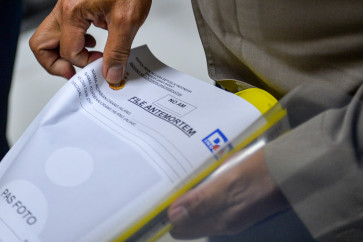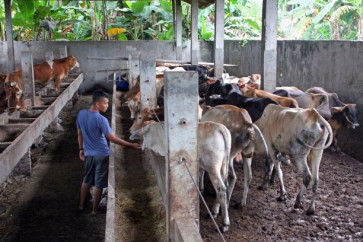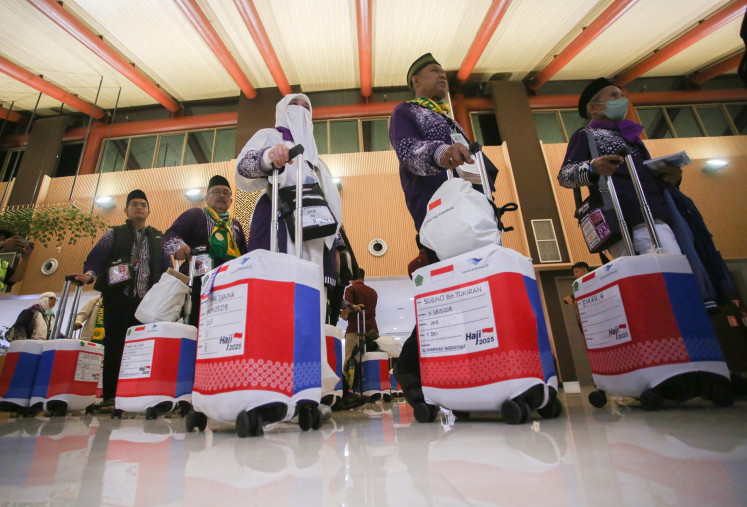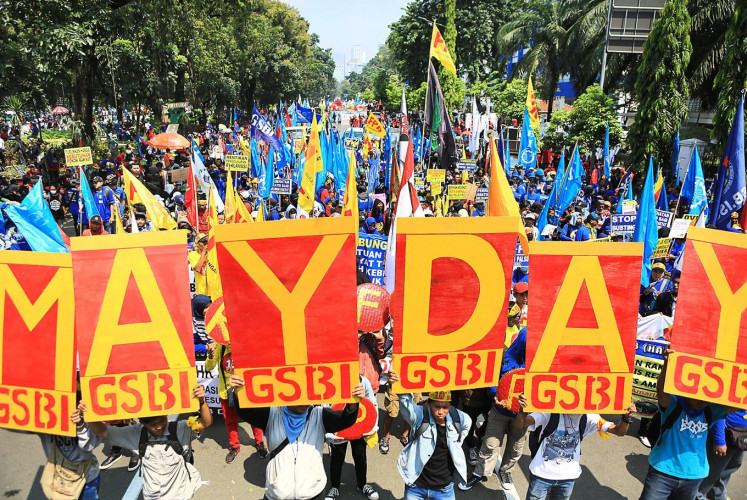Baris traditional dance to be revitalized
The Denpasar administration said it would revitalize nine kinds of Balinese traditional dances called Baris, in an effort to preserve the art form
Change text size
Gift Premium Articles
to Anyone

T
he Denpasar administration said it would revitalize nine kinds of Balinese traditional dances called Baris, in an effort to preserve the art form.
The nine dances, which used to be performed only for certain religious ceremonies, were displayed to the public, taking center stage at the closing of the Denpasar Festival last Saturday.
The exhibition is part of the administration’s efforts to preserve local culture, said I Made Mudra, head of the city’s cultural agency.
The nine dances are Baris Ketekok Jago, Baris Kupu-kupu, Baris Tengklong, Baris Pendet, Baris Wayang, Baris Cina, Baris Sikep, Baris Tamiang and Baris Panah.
“All of the dances were created years ago based on ‘supernatural guides’ in Hindu temples in Bali,” Mudra said.
“Not many people know about the dances, because they were only performed for specific occasions in the places where the dances originally come from. Some of the dances have not been performed for a long time.”
“We have undertaken some efforts to revitalize the dances and introduce them to the public, so people will know more about our art and culture.”
The revitalization starts by asking for permission from religious leaders at relevant temples to perform the dances in public. The agency also observed dances that have not been performed for a long time.
“We have been working with the art team from each district to collect data and to explore more dances that are nearly extinct,” Mudra said.
“We also found out more about the dances from the dancers and the players of the musical instruments. There might be some changes, but the dances will not lose their original characteristics.”
Mudra mentioned the Baris Kupu-kupu dance, which existed around the 1920s in the villages of Renon and Lebah, according to a note made by a foreign tourist. The dance has not been performed again for dozens of years. This dance tells a story about the life of butterfly, which is depicted as an agile character.
Baris Wayang also belongs to the group of dances that have not been performed for a long time, and was most recently performed at a major ceremony at the Pura Dalem Manik Penataran Agung in 2000.
Each of the nine Baris dances has its own characteristic moves, musical sounds, and costumes.
In the Baris Tengklong dance, the dancers move around the stage using one leg.
“Tengklong means ‘to stand up on one leg’. It is usually performed by four dancers as an expression of gratitude for winning a battle. The dancers also bring a spear and a kris. They go around a stage where a statue of Ida Betara Dalem Tambangan Badung stands,” Mudra said, adding that only a few people knew about this dance.
This year, the revitalization process will include further research about Baris dancing and other forms of culture. In the near future, the city administration will hold a workshop on the Baris dance by inviting cultural experts and prominent figures in society to discuss the dance and its revitalization process.
Cultural expert Wayan Geriya said the revitalization was crucial to exploring, developing and preserving traditional dance.
“I hope there will be more culture being revitalized,” he said, citing the city administration’s efforts to promote endek traditional cloth, aside from the Baris dance.
The Baris dance is one of the nine dances proposed to UNESCO to be acknowledged as part of the “world’s intangible cultural heritage”.









